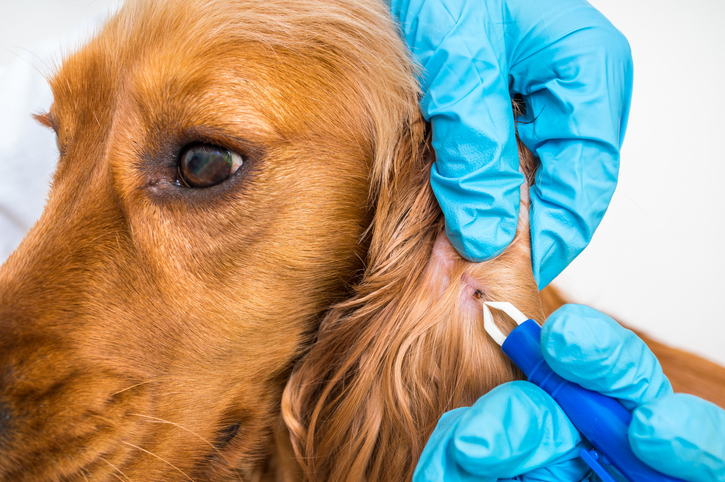Please note: while this article is very cat-centered, these tips can apply to our pooch friends, too!
Picture this: you’re out on the usual walk, minding your own business, perhaps on a walk home from work, or you’re out for your morning jog. Suddenly, you hear it—a cat’s meow. You pause, look around, and realize the sound of the cat has come from a place where they shouldn’t be—near a dumpster, or from under a garbage can lid, or from around the corner where you normally walk. You take a step closer, and the cat either pops out from around the corner or they pop out from under a garbage can or dumpster. That’s when you glimpse it—a collar around their neck, or a thin ribcage.
This may not be a normal situation, but there are times when a pet cat can get lost on their way home or, in some cases, be abandoned by their previous owner. Cats who live their lives as strays do not receive the medical attention they need, and a lost cat may end up in an even worse predicament than described (especially in the city!). If you are ever in a situation such as the one we just described, there are steps you can take to ensure if these cats need a home, or are missing theirs.
How to Tell if a Cat is Actually Lost or Abandoned
Sometimes, a cat is actually not lost at all but simply prowling its neighbourhood (especially if it’s being raised outdoors, but this is actually not a very good idea!). If this cat looks familiar to you, and you don’t see an owner calling out its name or desperately searching for the cat, it’s probably fine.
If you’re really not too sure, read the list below to see if the cat matches any of the following:
- A clean, healthy looking fur coat
- Bright eyes, with no goop from its tear ducts or redness
- A friendly, easygoing temperament
- A healthy physique, i.e. it looks well-fed
You should be more concerned if these signs are evident in the cat, however:
- Shy and timid behaviour (i.e. the cat runs away from you, or tries to hide)
- Aggressive behaviour, i.e. the cat hisses and bats at you when you draw near it
- A dirty and dull fur coat or patches of skin where fur should be
- A thin, visible ribcage
- Irritated eyes or goop-filled tear ducts
- Visible face wounds
- Limping
If the above applies, the cat likely needs help.
Always Look for Identification
A collar is usually a dead giveaway that the cat belongs to someone else. However, some cats hate wearing a collar, and they may escape outside if they’re being raised as strictly indoor cats. The other best means of identification is either one of two things: one, a series of numbers inside the cat’s ear flap, and two, an embedded microchip. These are permanent forms of identification that can help a lost cat be reunited swiftly.
If there is ID on the cat’s person, follow the next section on how to safely get the cat to its owner. If there is no ID to be found, or the cat appears to have been outside and fending for itself for some time, skip the next section and read the one that comes afterwards.
How to Return the Lost Cat to their Owner
Unless there is an owner nearby calling out the cat’s name, or searching desperately for their pet, these tips can be done if the cat is lost:
- Try and bring the cat to a veterinary office or an animal shelter and get them checked out for a microchip. This is because microchips are actually not visible at first glance; they are inserted under the cat’s skin between the shoulders. Often, microchip numbers are registered with the manufacturer’s company online. Vet offices and shelters have scanners to read the number, which will definitely be registered to the company and is searchable online. The number that is identified on the microchip should be on file at the vet office or shelter.
- If you see a serial number tattooed inside of the cat’s ear flap, and there’s no owner to be found, get the cat to a veterinary clinic or shelter right away! Each province in Canada has their own unique alphanumeric code for identifying which vet clinic applied the tattoo. This makes reunions with lost cats and their owners a much easier task!
- Get on social media! Take a photo of the cat and then post about what has happened to your social networks (Facebook and Instagram are good places to try and reach out to fellow pet owners). Some groups on Facebook were created specifically for this purpose, and you can join the group if the need calls for it; perhaps they’ve posted information on the very cat you’ve just found?
- If there are any posters of the cat you’ve found in your neighbourhood, get the info you need from it and then contact the owner. While posters may be a bit outdated compared to social media, in some cases they still work well as a means of notifying fellow pet owners that a cat needs help.
- Ask around your neighbourhood in person about the cat. This will require some door-to-door action, but it’s better to do that than to find out the cat was indeed missing when it didn’t appear to be!
What to Do if the Cat is Abandoned
Most abandoned cats hang out where there is a food source, i.e. garbage dumpsters and cans or in alleyways where predators cannot find them easily. It’s a sad fact that kittens may end up being abandoned too, usually because the owners did not think their ownership through or the kittens are born to a feral mother.
In all cases where the cat is abandoned, notify your local animal shelter and give them as much information as you can about the cat or kittens. If for any reason you cannot leave the cat’s side, or the cats in question are kittens, stay put and call the animal shelter.
What Not to Do
There are some no-nos that can and do apply in the event of a lost or abandoned cat:
- Do not attempt to trap an abandoned or lost cat yourself! It’s very likely that in both cases they will try to run away from humans. They may also be ridden with parasites such as fleas if they have been out on the streets for that long. An animal shelter has the means to trap the cats humanely as well as work with veterinarians in the event that medical attention for the cat or cats is needed.
- Don’t feed the cat or give them treats if they keep visiting you. Not only will this make them needy, their owners may not be too happy that you’re overdoing it with the treats!
- Don’t attempt to take the pet home with you. Unless the cat or kittens have been abandoned on your property, you may be unwittingly causing an owner grief by doing this!
All pets should be raised in a loving, nurturing environment, but unfortunately homelessness for cats is a reality, and some cats do go missing. In the case where a cat is lost, it’s an incredibly stressful situation for their owner! Imagine their relief if and when you help them find out their cat is safe and swiftly being returned to them. Hopefully by following our tips, and in the best case scenario, you can make yourself a hero to felines everywhere, whether it’s by reuniting a caring owner with their fur baby or helping abandoned pets find a new and loving home.
Creative Commons Attribution: Permission is granted to repost this article in its entirety with credit to Hastings Veterinary Hospital and a clickable link back to this page.






